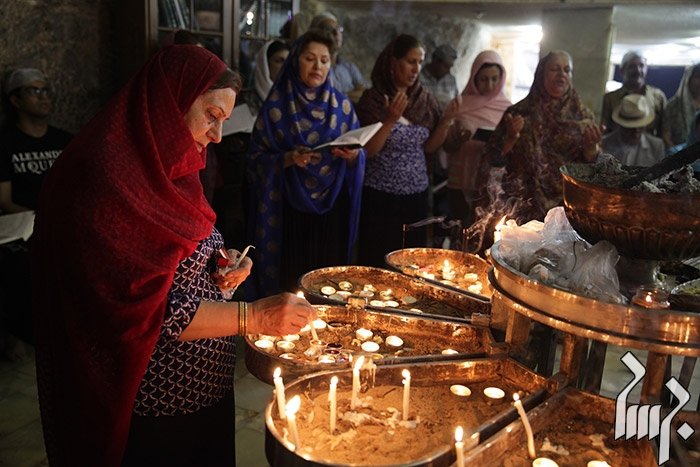By Naghmeh Mizanian
Zoroastrians hold Pir-e Sabz congregational pilgrimage
June 20, 2017 - 9:43

Zoroastrian pilgrims from all over the country gathered in the city of Yazd to hold congregational pilgrimage of Pir-e Sabz, also called Chak-Chak.
Zoroastrian pilgrims from June 14-18, Arsham Belivani, the head of Zoroastrian Association of Sharifabad and sponsor of Pir-e Sabz ceremony told the Tehran Times.
The majority of pilgrims gathered mainly on Thursday and Friday, Belivani added.
A congregational prayer, calling Gahanbar, was also held during the event, to wish for the health and well-being of Zoroastrian people, he added.
The pilgrims gathered at the site to pray in hope of a better future. After they visited the shrine, some of them prepared a meal and played music in general merriment, for it is their dedication and joy that gives strength to the hope for a joyous future.
Pir-e Sabz is the best known among Zoroastrians as it is also frequented by non-Zoroastrians and is part of tourist itineraries.
Pir is referred to shrine and Sabz means green and the alternative name, Chak-Chak, is said to be derived from the sound of dripping water in the cave which contains the shrine.
Pir-e Sabz is located in a shallow cave on the side of a barren mountain. Visitors and pilgrims walk up a trail and flight of steps past some buildings to the shrine itself.
Pir-e Sabz is dedicated to the royal princess Nikbanu (banu meaning lady and nik meaning good). The princess was the daughter of the last Sassanian king Yazdegird III.
According to legend, after the fleeing royal party had split up in an effort to avoid capture by the invading Arabs, princess Nikbanu fled to Pir-e Sabz. The Arabs caught up with her and now trapped, she prayed devoutly and a cleft in the mountain parted taking the princess into its womb. The rock face closed before the eyes of the bewildered Arabs, but not before a piece of her garment was trapped in the cleft of closed rock face. The piece of cloth petrified as a piece of colored rock and was visible until recently. The waters that now emerge from the rocks and drip along the 'cheeks' of the cave walls are the princess' tears of grief. The course of the trickling water is lined with wisps of par-e siavoshoun or maidenhair fern, symbolic of the princess' hair.
The site was discovered and associated with Nikbanu through a vision received in dream by a shepherd. The shepherd had spent the day looking for lost sheep.
Exhausted, he came upon the cave, drank some of its water and fell asleep. Then in a dream, the vision of a beautiful maiden appeared informing him about what had transpired on these hallowed grounds. She also entrusted the shepherd with a sacred duty to build in the cave a shrine of remembrance and pilgrimage. She also told him that his quest to find his lost sheep had led him to this cave and upon awakening he would find his sheep waiting for him.
Inside the Pir is a multi-petal candle holder. Various buildings called Kheileh have been constructed in the vicinity as places for gathering, rest and accommodation.
NM/MG
Leave a Comment